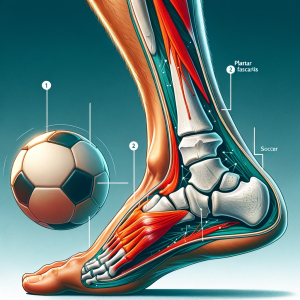
Maximizing Soccer Performance: Insights from Post-Competition Recovery Strategies
In the dynamic world of soccer, where each game and training session pushes athletes to their limits, recovery is just as crucial as the training itself. A recent study titled “Post-competition recovery strategies in elite male soccer players. Effects on performance: A systematic review and meta-analysis,” published in PLoS ONE, sheds light on this critical aspect. Authored by Altarriba-Bartes et al., and available here, this study dives into the effectiveness of various recovery strategies post-competition, emphasizing their impact on soccer players’ performance, physiological markers, and overall wellness.
The Study’s Exploration
By analyzing data from various online databases, the researchers focused on the efficacy of recovery strategies like Compression Garments, Cold Water Immersion, and Sleep Hygiene Strategy. They looked into how these approaches affect performance in terms of metrics like jumping ability (CMJ), sprint speed (20-m sprint), muscle strength (MVC), and markers of muscle damage and wellness.
Key Findings for Soccer Coaches and Players
The study’s results are particularly insightful for soccer coaches and athletes. It was found that recovery strategies significantly improved jumping performance (CMJ) 48 hours post-game, although they showed no marked impact on sprint speed or muscle strength. Furthermore, these strategies positively influenced muscle recovery, reducing soreness and muscle damage markers like CK and CRP.
What does this mean for soccer coaching and player development? Coaches can tailor recovery protocols to maximize players’ readiness for subsequent games, particularly focusing on strategies that enhance jumping performance. It also highlights the importance of individualized recovery plans, considering each player’s unique physiological responses and recovery needs.
Implications for Player Development
Understanding the nuances of post-competition recovery is vital in managing players’ health and optimizing their performance. For player development, incorporating effective recovery strategies can lead to better performance sustainability, reduce injury risks, and improve overall athlete wellness. This study encourages a more scientific approach to recovery, urging teams to adopt evidence-based practices.
Conclusion
The study by Altarriba-Bartes et al. is a significant step in understanding the role of recovery in elite soccer. It emphasizes the need for more focused research, especially randomized controlled trials in professional settings. As soccer continues to evolve, integrating scientific insights into training and recovery will be crucial in pushing the boundaries of athletic performance.
Coaches and players should view recovery as a critical component of their training regimen. By implementing scientifically backed recovery strategies, the potential for enhanced performance and reduced injury risk becomes a tangible reality in the competitive world of soccer.



